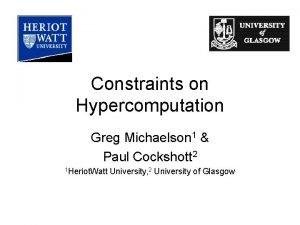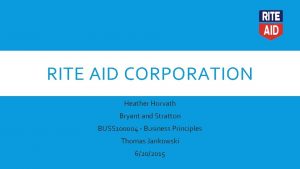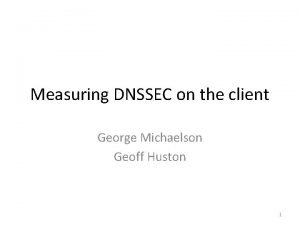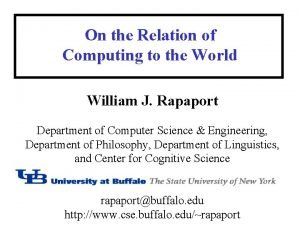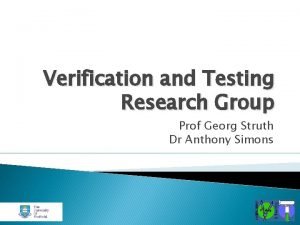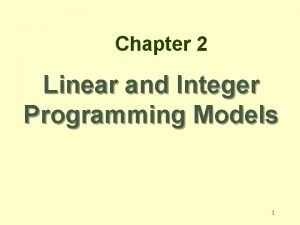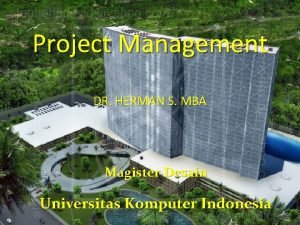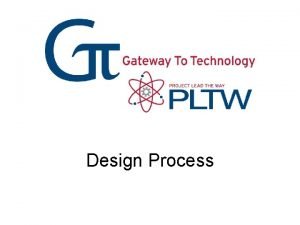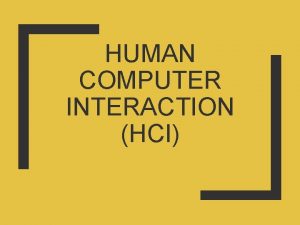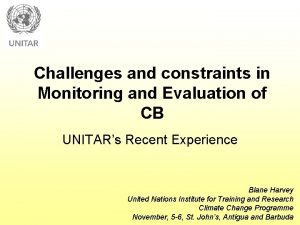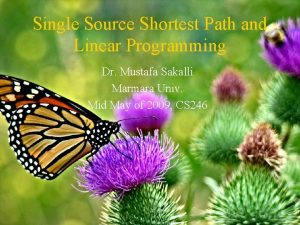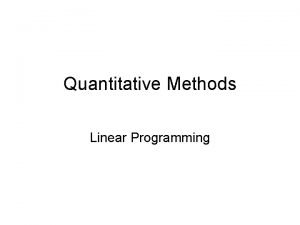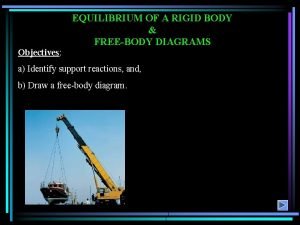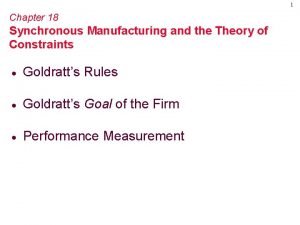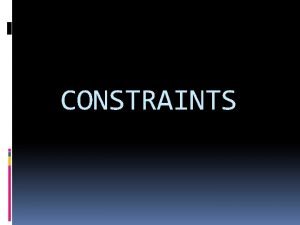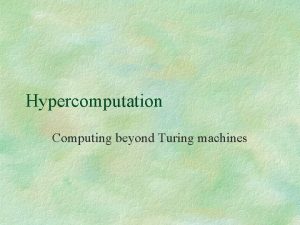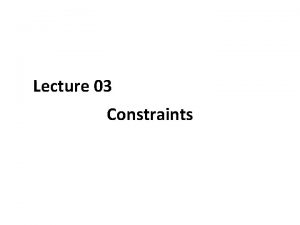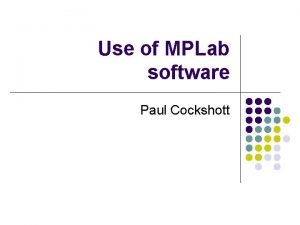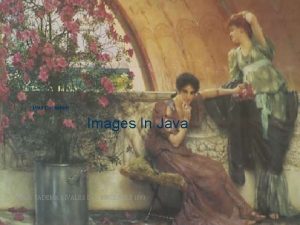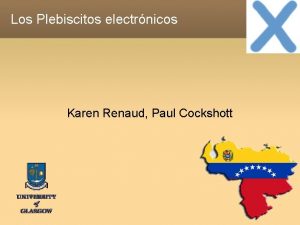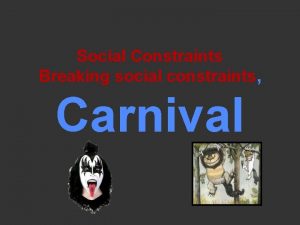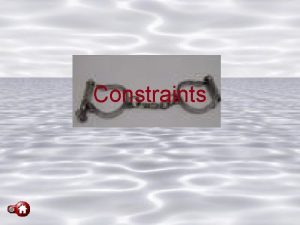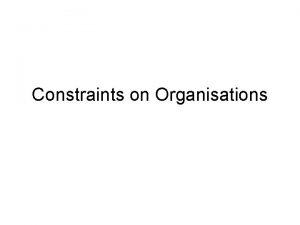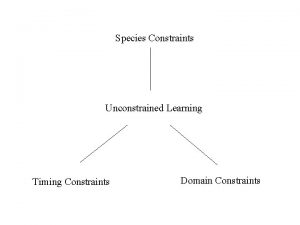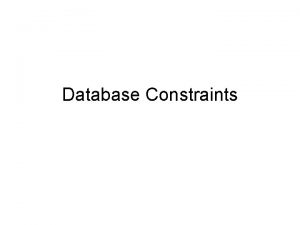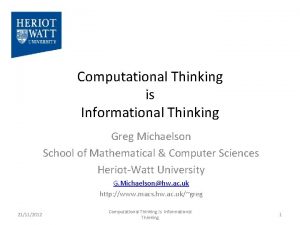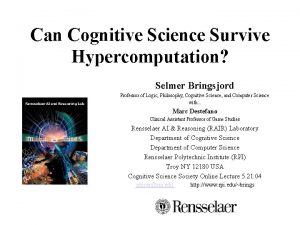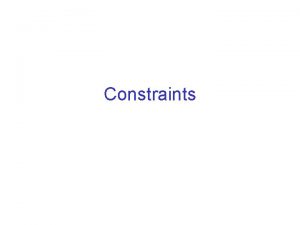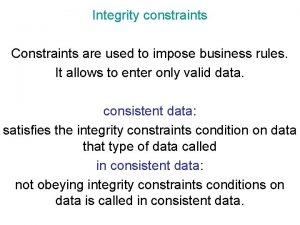Constraints on Hypercomputation Greg Michaelson 1 Paul Cockshott


















- Slides: 18

Constraints on Hypercomputation Greg Michaelson 1 & Paul Cockshott 2 1 Heriot. Watt University, 2 University of Glasgow

Church-Turing Thesis • effective calculability – A function is said to be ``effectively calculable'' if its values can be found by some purely mechanical process. . . (Turing 1939) • Church-Turing Thesis – all formalisations of effective calculability are equivalent – e. g. Turing Machines (TM), λ calculus, recursive function theory

Hypercomputation • are there computations that are not effectively calculable? • Wegner & Eberbach (2004) assert that: – TM model is too weak to describe e. g. the Internet, evolution or robotics – super. Turing computations (s. TC) are a superset of TM computations – interaction machines, calculus & $-calculus capture s. TC

Challenging Church-Turing 1 • a successful challenge to the Church. Turing Thesis should show that: – all terms of some C-T system can be reduced to terms of the new system, – there are terms of the new system which cannot be reduced to terms of that C-T system

Challenging Church-Turing 2 • might demonstrate: 1. some C-T semi-decidable problem is now decidable 2. some C-T undecidable problem is now semidecidable 3. some C-T undecidable problem is now decidable 4. characterisations of classes 1 -3 5. canonical exemplars for classes 1 -3

C-T & Physical Realism 1 • new system must encompass effective computation: – physically realisable in some concrete machine • potentially unbounded resources not problematic – e. g. unlimited TM tape

C-T & Physical Realism 2 • reject system if: – its material realisation conflicts with the laws of physics; – it requires actualised infinities as steps in the calculation process.

C-T & Physical Realism 2 • infinite computation? – accelerating TMs (Copeland 2002) • relativistic limits to function of machine • analogue computation over reals? (Copeland review 1999) – finite limits on accuracy with which a physical system can approximate real numbers

Interaction Machines 1 • Wegner & Eberbach allege that: – all TM inputs must appear on the tape prior to the start of computation; – interaction machines (IM) perform I/O to the environment. • IM canonical model is the Persistent Turing Machine(PTM) (Goldin 2004) – not limited to a pre-given finite input tape; – can handle potentially infinite input streams.

Interaction Machines 2 • Turing conceived of TMs as interacting open endedly with environment – e. g. Turing test formulation is based on computer explicitily with same properties as TM (Turing 1950) • TM interacting with tape is equivalent to TM interacting with environment e. g. via teletype – by construction – see paper

Interaction Machines 3 • IMs, PTMs & TMs are equivalent – by construction – see paper – PTM is a classic but non-terminating TM – PTM's, and thus Interaction Machines, are a sub-class of TM programs

Calculus 1 • calculus is not a model of computation in the same sense as the TM – TM is a specification of a buildable material apparatus – calculi are rules for the manipulation of strings of symbols – rules will not do any calculations unless there is some material apparatus to interpret them

Calculus 2 • program can apply calculus re-write rules of the to character strings for terms – calculus has no more power than underlying von Neumann computer • language used to describe calculus – channels, processes, evolution – implies physically separate but communicating entities evolving in space/time • does the calculus imply a physically realisable distributed computing apparatus?

Calculus 3 • cannot build a reliable parallel/ distributed mechanism to implement arbitrary calculus process composition – synchronisation implies instantaneous transmission of information – i. e. faster than light communication if processes are physically separated • for processors in relative motion, unambiguous synchronisation shared by different moving processes is not possible – processors can not be physically mobile for 3 way synchronisation (Einstein 1920)

Calculus 4 • Wegner & Eberbach require implied infinities of channels and processes – could only be realised by an actual infinity of fixed link computers – finite resource but of unspecified size like a TM tape – for any actual calculation a finite resource is used, but the size of this is not specified in advance

Calculus 5 • Wegner & Eberbach interpret ‘as many times as is needed' as meaning an actual infinity of replication – deduce that the calculus could implement infinite arrays of cellular automata (CA) – cite Garzon (1995) to the effect that they are more powerful than TMs. • CAs require a completed infinity of cells – cannot be an effective means of computation.

Conclusion 1 • Wegner & Eberbach do not demonstrate for IM or calculus: 1. some C-T semi-decidable problem which is now decidable 2. some C-T undecidable problem which is now semi-decidable 3. some C-T undecidable problem which is now decidable 4. characterisations of classes 1 -3 5. canonical exemplars for classes 1 -3

Conclusion 2 • Wegner & Eberbach do not demonstrate physical realisability of IM or calculus • longer paper submitted to Computer Journal (2005) includes: – fuller details of constructions – critique of $-calculus
 Greg michaelson
Greg michaelson Rite aid bryant
Rite aid bryant Geoff michaelson
Geoff michaelson Hypercomputation
Hypercomputation Hypercomputation
Hypercomputation Alonzo church
Alonzo church Georg struth
Georg struth Enforce picture
Enforce picture Constrains two faces, edges, points, or axes together.
Constrains two faces, edges, points, or axes together. Non negativity constraints
Non negativity constraints Quadruple constraints in project management
Quadruple constraints in project management Criteria and constraints clipart
Criteria and constraints clipart Logical constraints example in hci
Logical constraints example in hci Constraints in monitoring and evaluation
Constraints in monitoring and evaluation Shortest path linear programming
Shortest path linear programming Linear programming in quantitative techniques
Linear programming in quantitative techniques Improperly constrained
Improperly constrained Synchronous manufacturing
Synchronous manufacturing Holonomic and nonholonomic constraints definition
Holonomic and nonholonomic constraints definition
